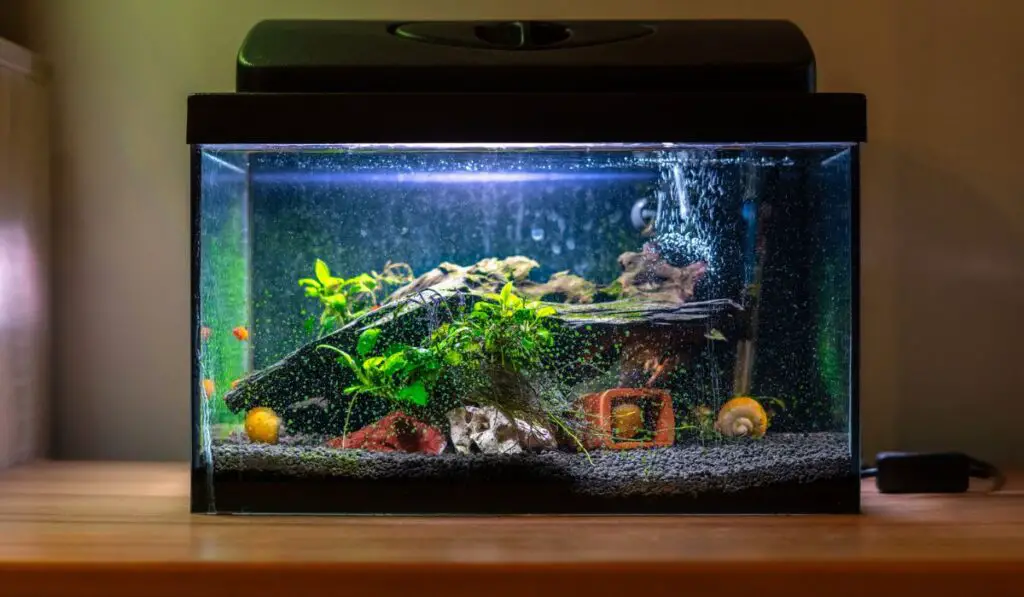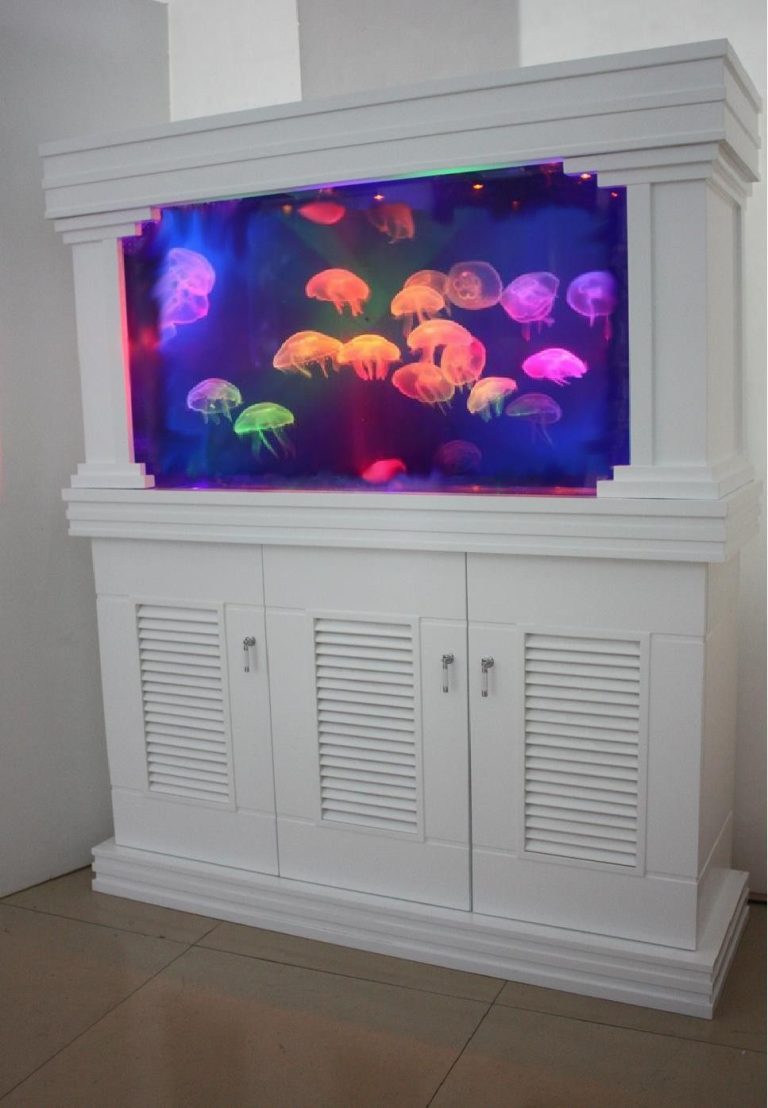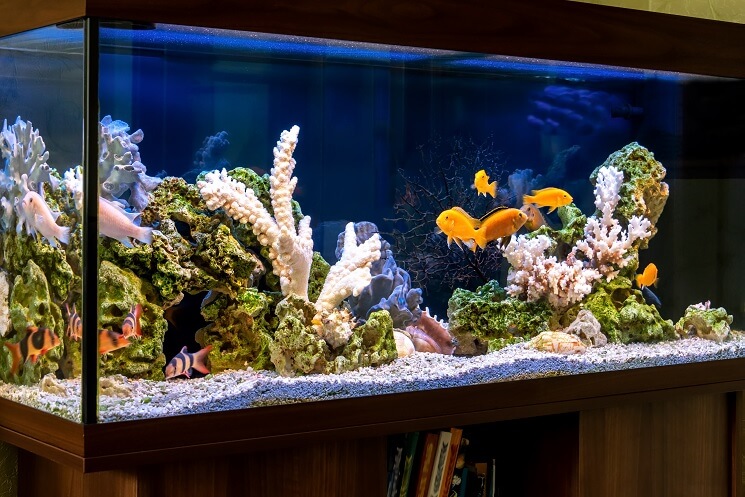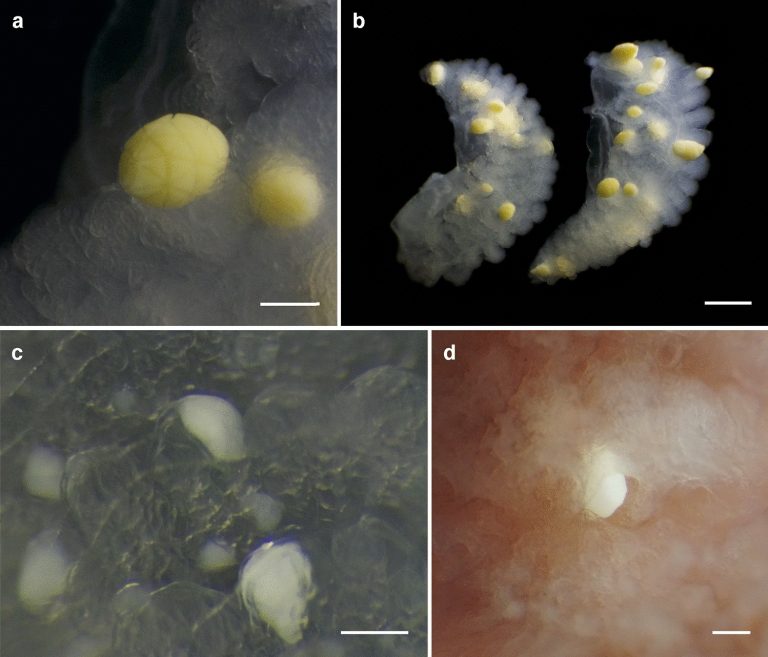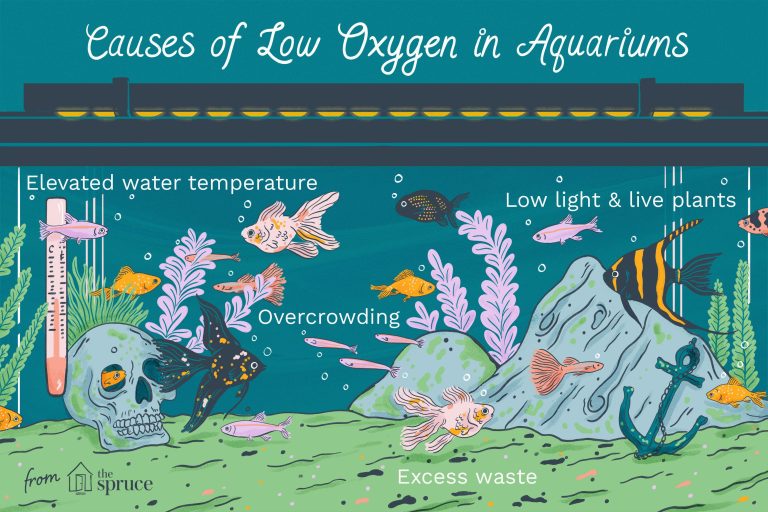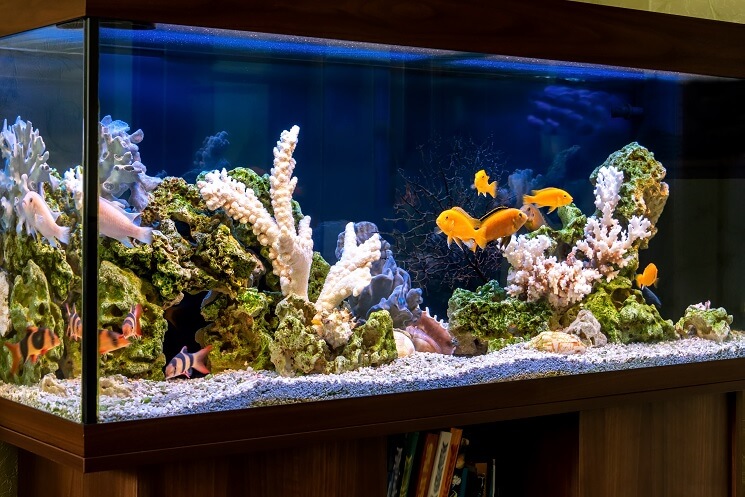How to Sparkle Your Aquarium with Clean Plastic Plants
To clean aquarium plastic plants, remove them from the tank and scrub with a soft brush and mild soap or vinegar solution. Keeping aquarium plastic plants clean is essential for maintaining the health of your aquatic pets.
Accumulated dirt and debris on the plants can negatively impact the water quality of the tank, leading to disease and bacterial growth. In this article, we will discuss the step-by-step process for cleaning plastic plants in your aquarium. We will also cover the dos and don’ts of cleaning aquarium plants, how often you should clean them, and the best practices for keeping them looking new.
With our tips and tricks, you’ll be able to maintain a beautiful and healthy aquarium environment for your beloved fish.

Credit: www.interpetlife.com
Choosing The Right Plastic Plants For Your Aquarium
Importance Of Selecting The Correct Plastic Plants
Aquarium plastic plants are a great way to add color and texture to your aquarium without risking diseases and parasites that live plants can carry. However, selecting the right plastic plants is also essential to ensure that your aquarium thrives.
Here are some reasons why:
- Realistic look: Choosing the right plastic plants will give your aquarium a more realistic look, making it appear more natural and beautiful for your fish to live in.
- Health of fish: Plastic plants that are not suitable for your aquarium can be dangerous to your fish’s health, causing injury or even death.
- Water quality: Poor quality plastic plants can release toxins into the water, making it dangerous for your fish.
Factors To Consider When Selecting Plastic Plants For Your Aquarium
Here are some factors to consider before selecting plastic plants for your aquarium:
Type Of Fish And Their Behavior
Different types of fish require different environments. It is important to choose plastic plants that cater to your fish’s needs. Consider the following:
- Herbivorous fish: These fish enjoy nibbling on plants and can damage plastic plants easily. Choose plastic plants that can handle wear and tear.
- Aggressive fish: Some fish are known to nip and bite on plants, and this can damage them easily. Choose sturdy plastic plants that are not easily destroyed.
- Peaceful fish: Soft and delicate plastic plants are suitable for peaceful fish, as they will not cause any destruction.
Tank Size And Shape
The size and the shape of your aquarium will determine the size of plastic plants that you can use. It is essential to choose plants that suit your aquarium’s size. Consider the following:
- Small aquarium: It’s best to pick shorter plants in smaller aquariums. Tall plants can make the aquarium look cramped and smaller.
- Large aquarium: Taller plants are ideal for larger aquariums as they provide hiding spaces and shelter for your fish.
Lighting Conditions
Plants require appropriate lighting to grow and thrive. Here are some plants that you should consider based on the lighting conditions in your aquarium:
- Low-light plants: These require less light. They are suitable for aquariums that are not exposed to sunlight or have weak lighting.
- High-light plants: These require high-intensity lighting and are ideal for brightly lit aquariums.
Water Conditions
Water quality is an important factor in determining the overall health of your aquarium plants and fish. Consider the following:
- Ph level: Acidic and alkaline water can affect plastic plants differently. Check the ph level and choose plants accordingly.
- Water hardness: Some aquarium plastic plants are more robust and can tolerate hard water, while others can’t.
Choosing the right plastic plants is essential to maintain a healthy aquarium. By considering factors such as your fish’s behavior, tank size, lighting conditions, and water conditions, you can select the best plastic plants that cater to your aquarium’s unique needs.
Preparing And Cleaning Your Plastic Plants
Overview Of The Importance Of Cleaning Plastic Plants Before Adding Them To Your Aquarium
When it comes to preparing your aquarium, cleaning your plastic plants is an essential step. Not only does it help maintain your aquarium’s hygiene, but it also ensures your plants’ longevity. Here are a few reasons why cleaning plastic plants before adding them to your aquarium is crucial:
- It removes dust, dirt, and debris from the plants that might have accumulated during transportation or storage, preventing them from scattering in your aquarium and affecting the ecosystem.
- New plastic plants contain chemicals that can harm or even kill your fish if they are not appropriately cleaned before adding them to your aquarium.
- Algae and other microorganisms can grow on the surface of plastic plants if they are left untreated. Incorporating them into your aquarium can encourage the growth of harmful bacteria, leading to complications.
Step-By-Step Guide On How To Clean Your Plastic Plants
Cleaning aquarium plastic plants is a straightforward process that requires a few simple steps. Here is a step-by-step guide on how to prepare and clean your plastic plants:
- Rinsing the plants:
Before soaking the plants in water, remove any visible debris, dirt or dust particles by rinsing them under fresh running water. Be sure to use a gentle stream of water to avoid damaging the plants.
- Soaking the plants in warm water:
Afterward, soak the plastic plants in warm water for 10-15 minutes. This step helps remove any harsh chemicals or coatings from the plants’ surface. You can add a small quantity of vinegar to enhance the soaking process.
- Scrubbing the plants:
Gently scrub the plants, moving your hands over each leaf, and stem of the plant. Be sure to remove any dirt or contaminants that were not removed in the previous steps.
- Rinsing the plants again:
Once complete, rinse the plants again under a gentle stream of cool fresh water to ensure that all the debris and contaminants are removed. You can also use a damp cloth to wipe the surface of the plants to make sure they are entirely clean.
- Drying the plants:
Finally, let the plants air dry completely before incorporating them into your aquarium. You can dry them on a clean towel or use a hairdryer to speed up the process. Avoid using a hot dry setting on the hairdryer as it may damage the plants.
Cleaning your aquarium plastic plants is a fundamental aspect of maintaining your aquarium’s health. Proper cleaning ensures that your plants remain healthy, free from harmful chemicals, and extend their lives. Using the five-step process mentioned above will ensure that your aquarium is clean, healthy, and safe for your aquatic friends.
Adding Plastic Plants To Your Aquarium
If you’re a fish enthusiast, you likely know how important it is to create an environment for your fish that mimics their natural habitat. Adding plastic plants to your aquarium can help create a more natural environment for your fish to thrive.
Here’s a simple guide to add plastic plants to your aquarium.
Importance Of Proper Placement Of Plastic Plants Within The Aquarium
Proper placement of plastic plants plays a key role in creating a natural habitat for your fish. Here are a few key points to keep in mind.
- Placement: Place taller plants at the back of the aquarium and shorter plants in the front to create a natural look.
- Distribution: Ensure equal spacing between the plants so that fishes can easily swim around without causing any damage to your plants
- Harmonization: Choose plants which will harmonize with your aquarium. They should not look like an add-on, rather they should seamlessly blend in with the aquarium.
Step-By-Step Guide To Adding Plastic Plants To Your Aquarium
Adding plastic plants to your aquarium may seem overwhelming, but it’s quite easy. Follow these simple steps to add them with ease.
- Preparing the plants: Rinse the plants with water thoroughly to remove any dust or debris. This is to prevent any contamination in the aquarium.
- Arranging the plants: Arrange your plants according to the guidelines for proper placement in your aquarium. Taller plants should go in the back, and shorter plants should go in the front.
- Ensuring proper spacing and distribution: Ensure you place the plants so that there is enough space for fish to swim around. Avoid overcrowding one section of the aquarium because it might cause damage to your plants.
- Securing the plants to the bottom of the tank: Some plants might float and can cause disturbance for your fishes. To avoid this, secure the plants to the bottom of the tank with weights or a plant anchor.
By following these simple steps, you can add plastic plants to your aquarium and give your fish an environment that they will love.
Maintaining The Cleanliness Of Your Plastic Plants
Importance Of Regular Maintenance To Keep Your Plastic Plants Clean
Aquarium plastic plants may seem low-maintenance, but they still require regular cleaning to maintain their beauty and prevent any potential harm to your aquatic pets. Dirty plants can harbor harmful bacteria and fungi, which, if not removed, can create an unsanitary environment within your tank.
Regular maintenance is essential to keep your plastic plants clean and your aquarium inhabitants happy.
Provide A Step-By-Step Guide On How To Maintain Your Plastic Plants
Checking the plants for algae and debris:
- Regularly inspect your plastic plants for signs of algae growth or debris accumulation.
- Remove any visible debris by gently rinsing the plants using a hose, making sure not to damage the delicate leaves.
- Be careful when removing the plants from the water to avoid disturbing the aquarium environment.
Removing any buildup on the plants:
- Soak the plastic plants in a solution of bleach and water (1 part bleach to 19 parts water) for about 5 minutes.
- Use a soft-bristled brush or sponge to gently scrub away any buildup or algae on the plant leaves.
- Rinse the plants thoroughly in fresh water to remove any traces of bleach.
Rinsing the plants:
- Rinse any excess dirt or bleach solution off the plants thoroughly with fresh water.
- Hold the plants in a bucket of water and swirl them around gently to ensure all the debris has been removed.
Re-cleaning the plants if necessary:
- If there is still buildup on the plants after the initial cleaning, repeat the soaking and scrubbing process until all the debris has been removed.
- Make sure to rinse off the plants completely each time after the cleaning process.
By following these simple steps, you can ensure that your aquarium plastic plants remain in excellent condition, providing your aquatic pets with a beautiful and healthy environment to thrive in.
Frequently Asked Questions On How To Clean Aquarium Plastic Plants
How Often Should I Clean My Aquarium Plastic Plants?
It is recommended to clean aquarium plastic plants once a month or as needed.
What Should I Use To Clean My Aquarium Plastic Plants?
You can clean aquarium plastic plants with a solution of water and vinegar or a mild soap.
Can I Use Bleach To Clean My Aquarium Plastic Plants?
No, you should never use bleach to clean aquarium plastic plants as it can be harmful to aquatic life.
How Do I Prevent My Aquarium Plastic Plants From Getting Dirty?
You can prevent your aquarium plastic plants from getting dirty by reducing overfeeding and adding a filter to your aquarium.
Conclusion
Keeping your aquarium plants clean is a fundamental step in maintaining a healthy aquatic environment for your fish to thrive. Maintaining a clean tank and cleaning aquarium plastic plants is relatively easy and can be done quickly when these steps are followed effectively.
With the right tools and equipment on hand, you can make your aquarium look cleaner, clearer, and more inviting for your fish. Remember, cleaning plastic plants may differ depending on their type and size. Therefore, follow the manufacturer’s instructions on how to keep them clean.
Regularly cleaning and maintaining your aquarium plastic plants will keep them looking like new and will provide a safe and healthy environment for your aquatic pets. We hope our step-by-step guide on how to clean aquarium plastic plants will be helpful to you and your fish.
